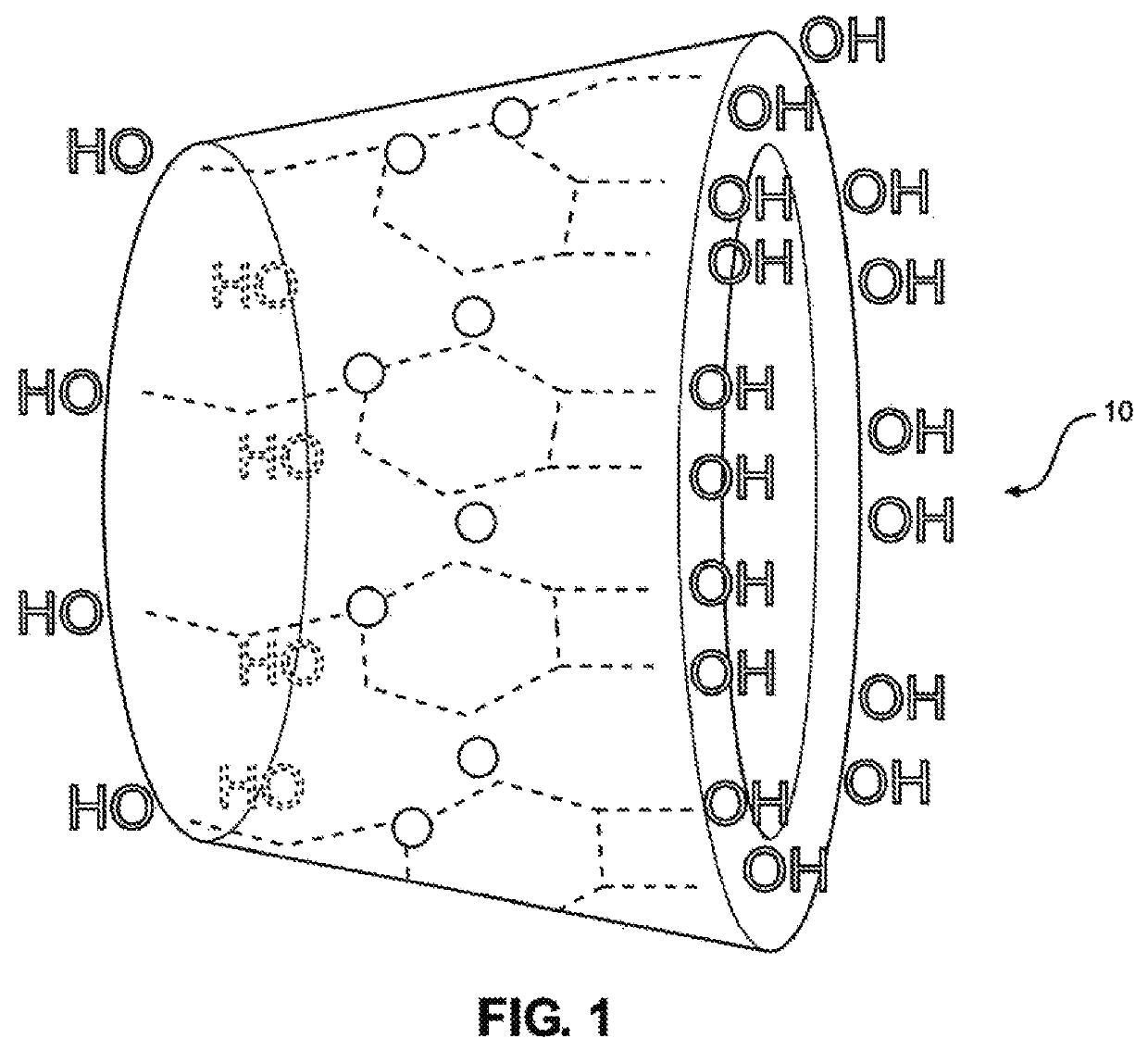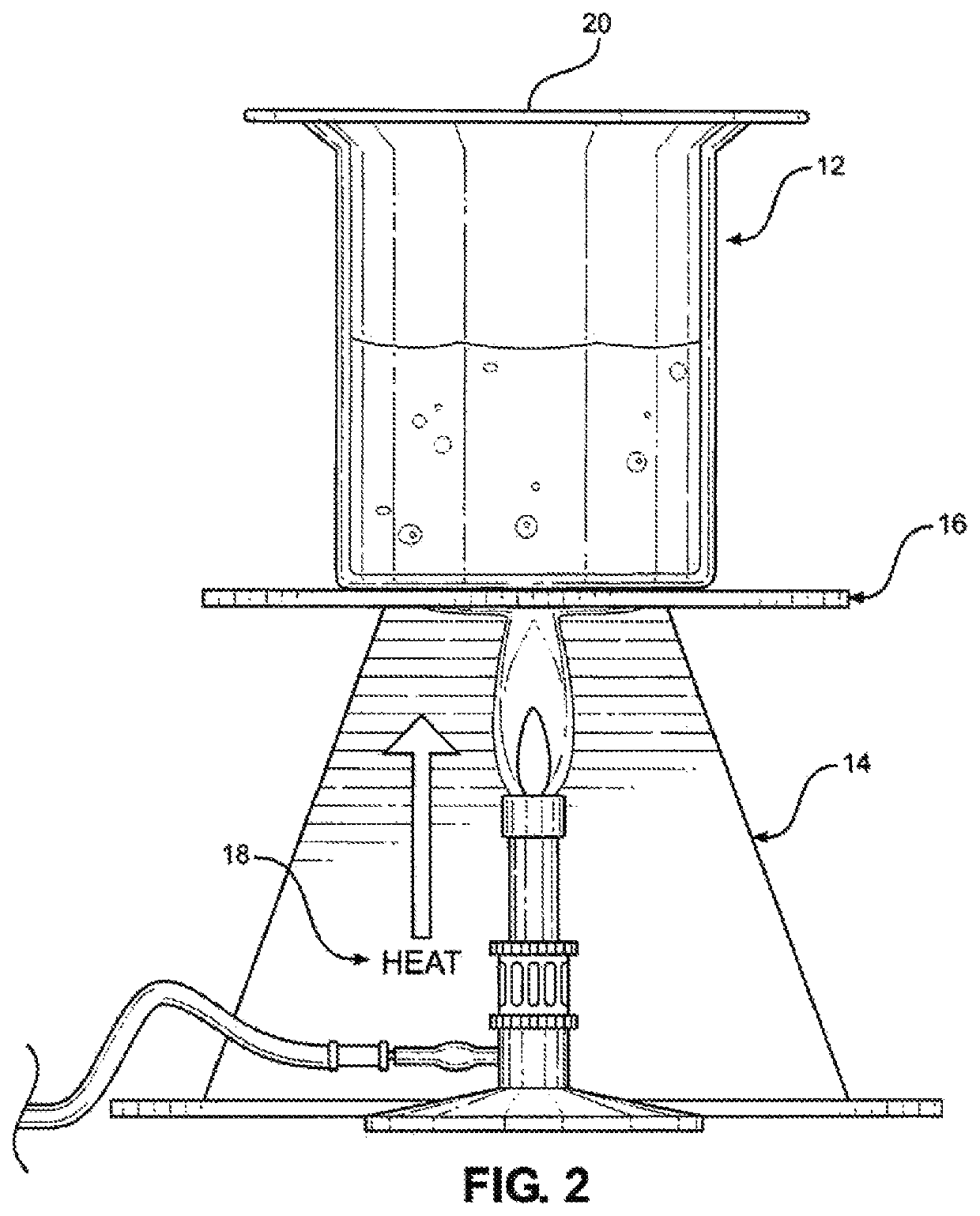Slow release calcium composition
a technology of calcium cation and composition, applied in the direction of heavy metal active ingredients, inorganic non-active ingredients, macromolecular non-active ingredients, etc., can solve the problems of stress, damage, etc., and achieve the effect of reducing the potential stress on living tissues due to excessive amounts of calcium cation
- Summary
- Abstract
- Description
- Claims
- Application Information
AI Technical Summary
Benefits of technology
Problems solved by technology
Method used
Image
Examples
example 1
on of Calcium Ions in Gamma Cyclodextrin
[0066]In this example, an inclusion complex of calcium cations encapsulated in gamma-cyclodextrin was prepared. Initially, a 1:1 molar ratio mixture of gamma cyclodextrin (γ-CD) and CaCl2 is first prepared by dissolving 0.25 moles of γ-CD in 10 mL of water, then adding 0.25 moles of CaCl2 with constant stirring in a round bottom sodium borosilicate glass flask. The γ-CD+CaCl2 mixture was then heated at 60° C. and mixed for 35 minutes. A slight color change was observed, indicating completion of the complexation reaction.
[0067]Without being bound by theory, it is believed that the γ-CD acts as a reducing and binding agent in the presence of water, where it readily oxidizes the chloride and acts like a Lewis acid.
[0068]The mixture is then heated to a temperature of about 60° C., which results, topologically, in the torsional structural opening of both the larger and smaller “faces,” of the cyclodextrin, which is then exposed to the solvent; in t...
example 2
Calcium Cations on Cellular Nitric Oxide Levels
[0070]In this experiment, the influence of Ca2+ on nitric oxide (NO) levels was determined by measuring the integrated fluorescence of the reaction product of NO with diaminofluorescein-FM diacetate (DAF-FM DA, C25H18F2N2O7).
[0071]To demonstrate that NO generated by retinal pigmented epithelium (RPE) cells was related to internal levels of Ca+2 ions, RPE wild-type (WT) cells were exposed to red light (RL) having a wavelength (λ) of 635 nm for 15, 30 or 60 minutes, and NO levels were determined by measuring the integrated fluorescence of the reaction product of NO with diaminofluorescein-FM diacetate (DAF-FM DA, C25H18F2N2O7), for up to 800 minutes post-exposure.
[0072]Procedurally, the experiment was carried out using a 96 well plate, with either ionic calcium (Ca2+) or encapsulated calcium (CaCD) added to each of the wells. The concentration of calcium in the wells as CaCl2 was 1.67 mM, and the concentration as CaCD was 2.79 mM stock (o...
PUM
 Login to View More
Login to View More Abstract
Description
Claims
Application Information
 Login to View More
Login to View More - R&D
- Intellectual Property
- Life Sciences
- Materials
- Tech Scout
- Unparalleled Data Quality
- Higher Quality Content
- 60% Fewer Hallucinations
Browse by: Latest US Patents, China's latest patents, Technical Efficacy Thesaurus, Application Domain, Technology Topic, Popular Technical Reports.
© 2025 PatSnap. All rights reserved.Legal|Privacy policy|Modern Slavery Act Transparency Statement|Sitemap|About US| Contact US: help@patsnap.com


